Graham Reid | | 2 min read
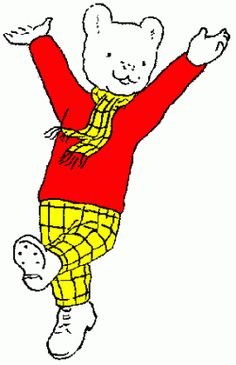
On Sunday, November 8 2020, Rupert the Bear turns 100.
To commemorate the occasion Paul McCartney is reissuing the animated film Rupert and the Frog Song in which he voiced Rupert.
Produced by McCartney and directed by animator Geoff Dunbar, the 1984 film has been polished and restored with a new audio mix.
This is all well and good if you care about it, but what is absolutely galling in the publicity is that the titular character is referred to as “DreamWorks Animation/Classic Media’s Rupert The Bear”.
 Okay, they have ownership of the character and probably the franchise and merchandise and such, but let's keep everyone a bit honest here.
Okay, they have ownership of the character and probably the franchise and merchandise and such, but let's keep everyone a bit honest here.
Rupert the Bear has history before the corporate takeover.
The little anthropomorphic bear was originally drawn by the Canterbury artist and book illustrator Mary Tourtel (who had the good fortune to marry an editor of the Daily Express).
Tourtel's first single-frame illustration appeared at the bottom of a women's page (in the Daily Express, of course) and Rupert's career – and hers – took off.
Tourtel came from a gifted family – her father and a brother worked at Canterbury Cathedral making and restoring stained glass and another brother was a book illustrator.
Rupert Bear – as he is commonly shortened to – is still a regular feature in the Daily Express and he has enjoyed annuals, a soft drink named after him (Rupert Whizz Fizz), models and toys, and the affection of Paul McCartney who wrote and produced the animated film Rupert and the Frog Song, Rupert appearing in his video for We All Stand Together which went into Britain's top five.
Rupert Bear is one of the most popular and enduring of all British cartoon characters, even if the “poetry” of the text was clumsy and strained for the most part.
Through the decades Rupert had very few illustrators after Tourtel retired in 1935.
Alfred Bestall took over and is credited as standardizing Rupert's image. In the annuals he also placed him in exotic locations and landscapes and made a real art form of the otherwise limited square-frame format.
He illustrated Rupert for 30 years, and stayed on until the early 70s doing the annuals.
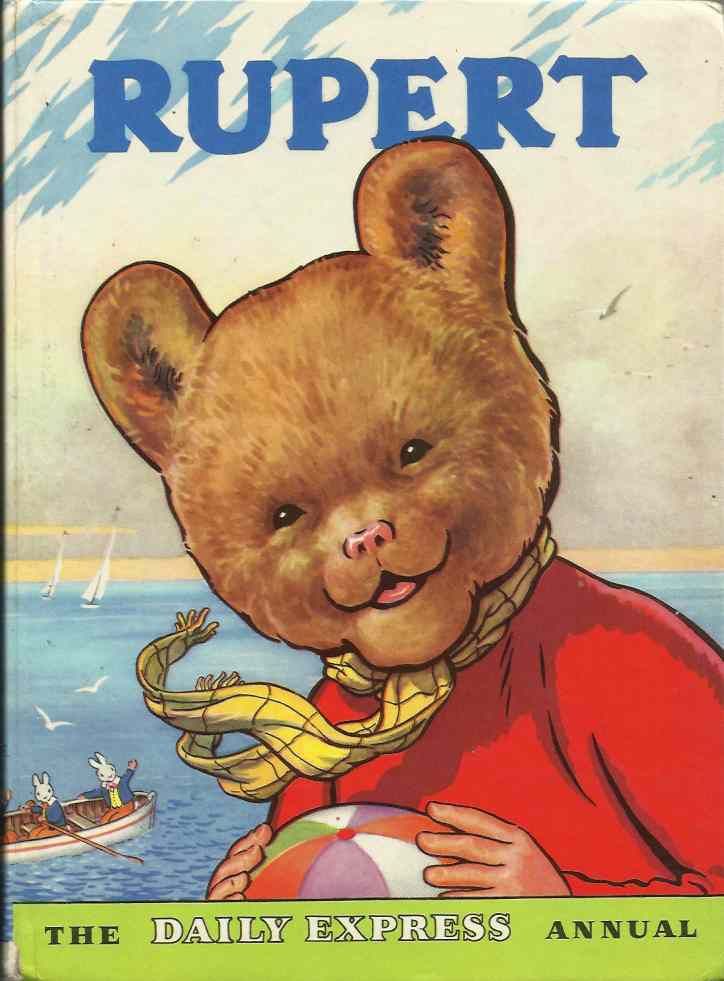 His successor John Harrold also drew Rupert and his pals for three decades until 2008. Stuart Trotter has been producing Rupert since then.
His successor John Harrold also drew Rupert and his pals for three decades until 2008. Stuart Trotter has been producing Rupert since then.
Rupert Bear hasn't been without controversy (there were the inevitable accusations of racism) and in 1973 Rupert's brown face was changed to white without Bestall's approval on the cover of an annual, and it was the last cover he ever did.
Artists and fans took Rupert very seriously.
By current standards Rupert Bear is rather a dull figure – he doesn't stand a chance next to Angry Birds or Minecraft – and no one could defend those awful rhyming captions of earlier years (which simply don't scan). But the detail in the illustrations, his slightly priggish nature and timeless adventures are quite endearing.
But maybe that's just me.
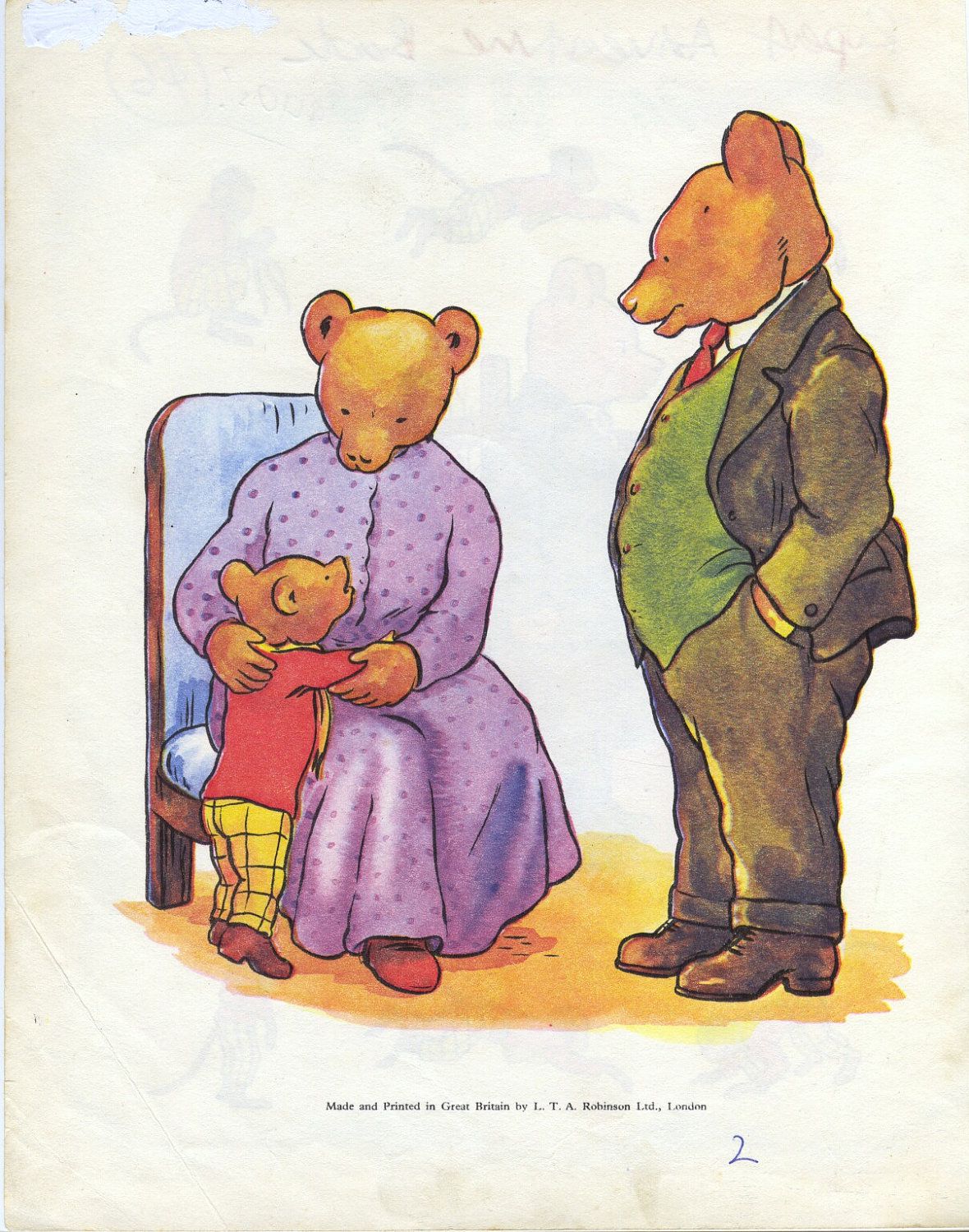 I saw a Rupert annual when I was in Canterbury in 2009 at the Rupert Museum.
I saw a Rupert annual when I was in Canterbury in 2009 at the Rupert Museum.
I'd had it as a kid.
And I came over the big softie.
Strange that in Canterbury -- an ancient city with a swirl of complex, murderous, religious and political history, not to mention exceptional architecture, all of which I had explored – I should be so moved by a book I had forgotten for more decades than seem healthy to count.
But that too is history, of a very personal kind.
In Canterbury, the Rupert Bear display brought out the kid in me when I'd had enough of being an adult.
.



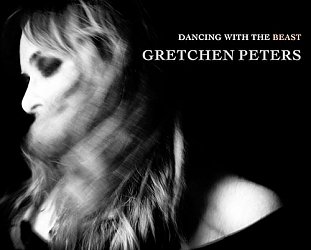
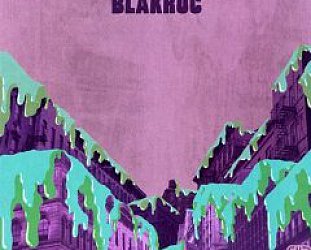
post a comment